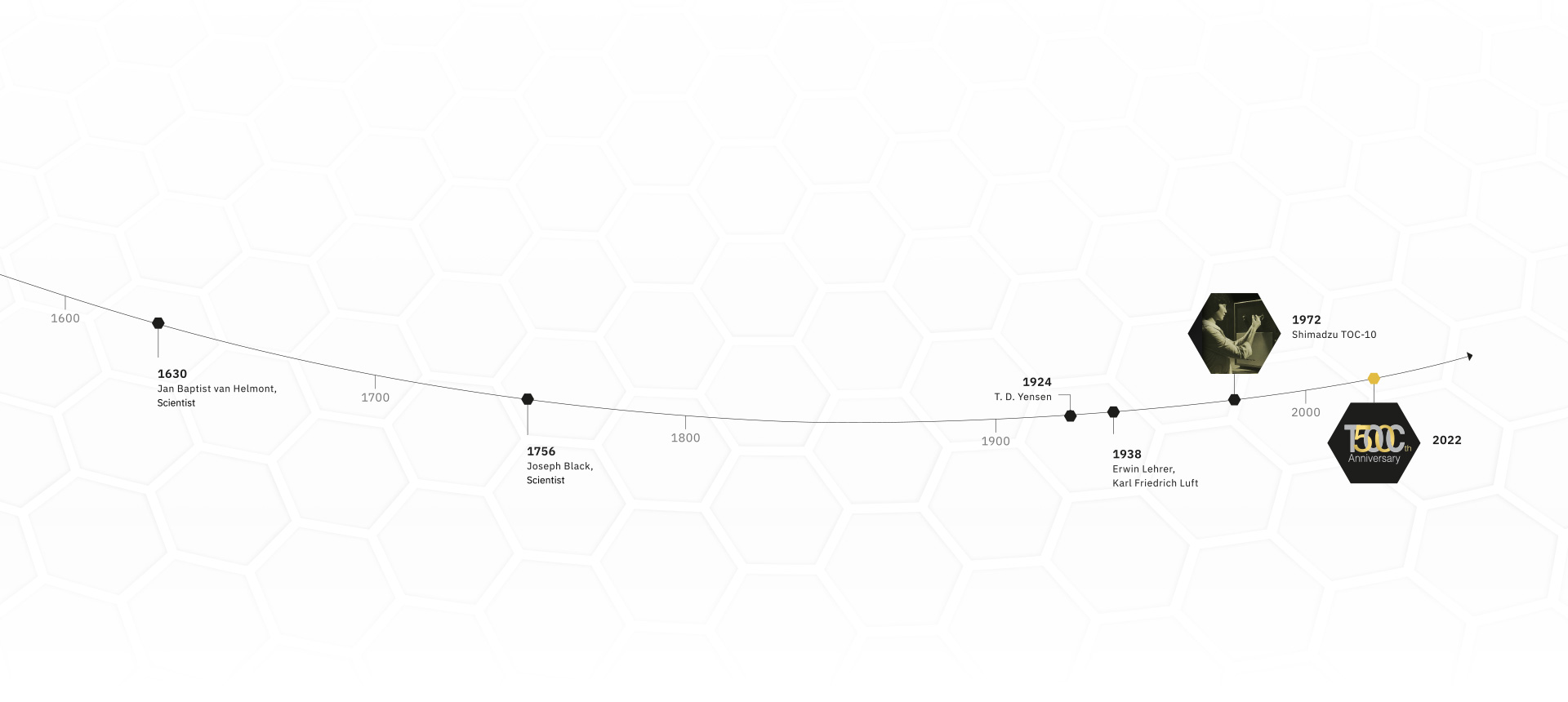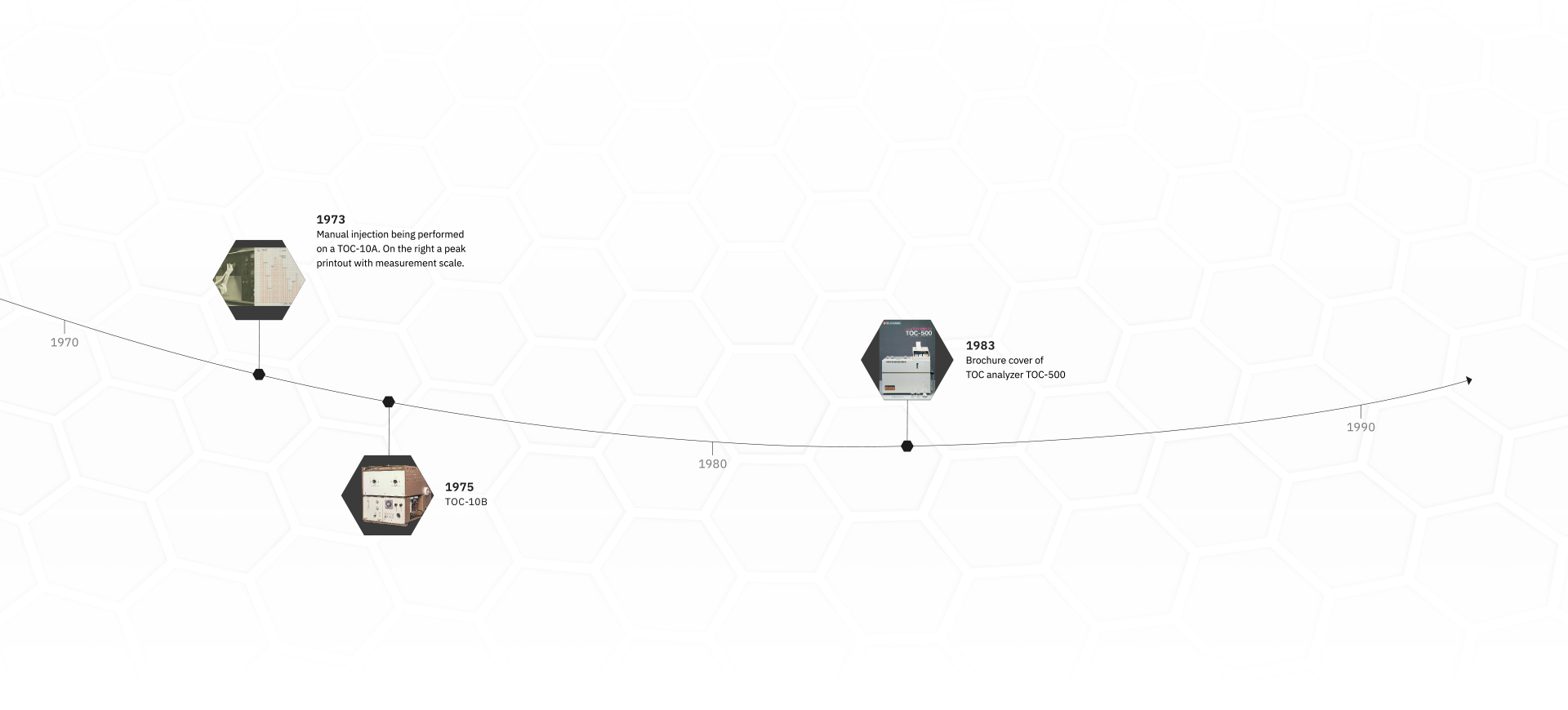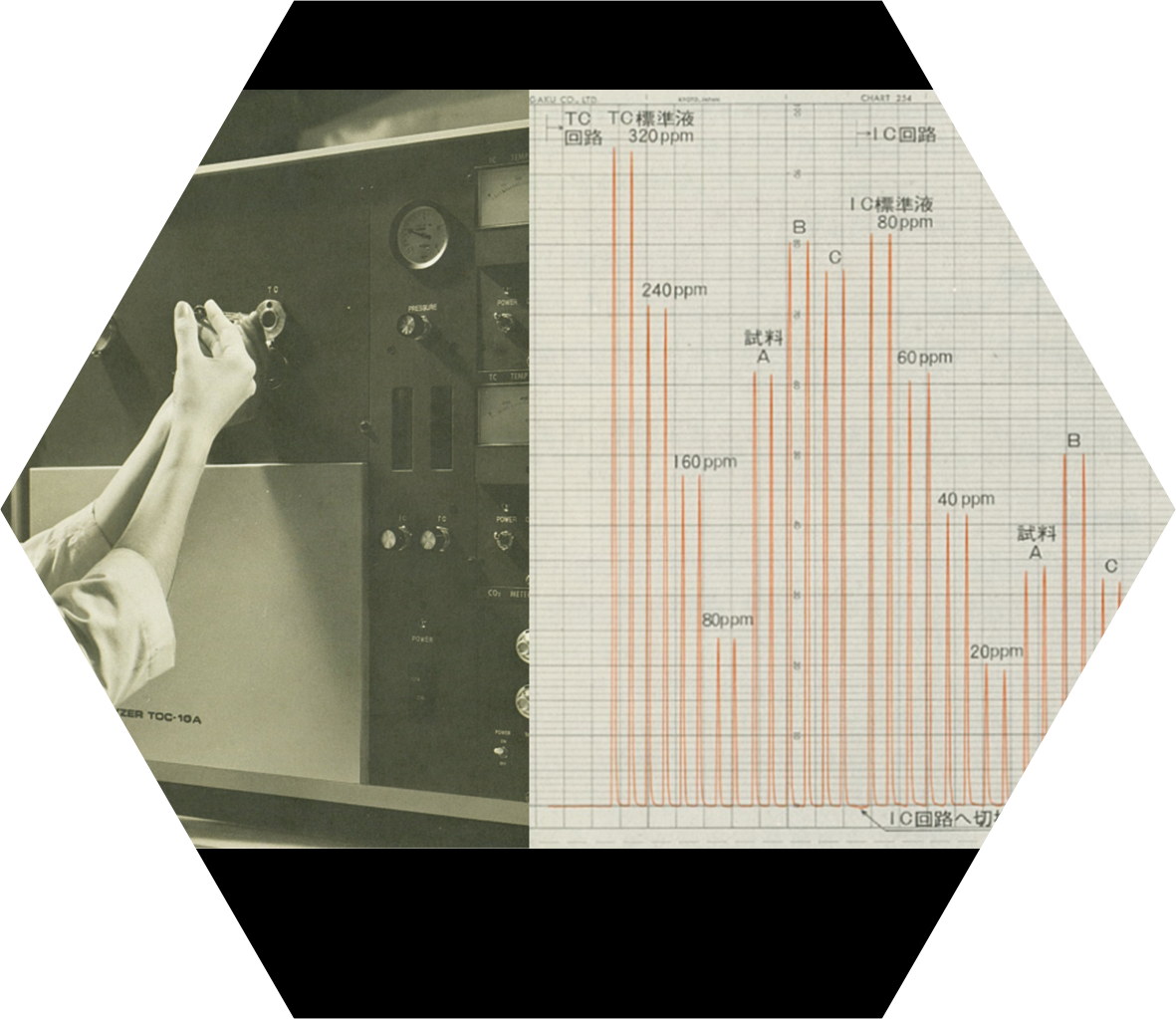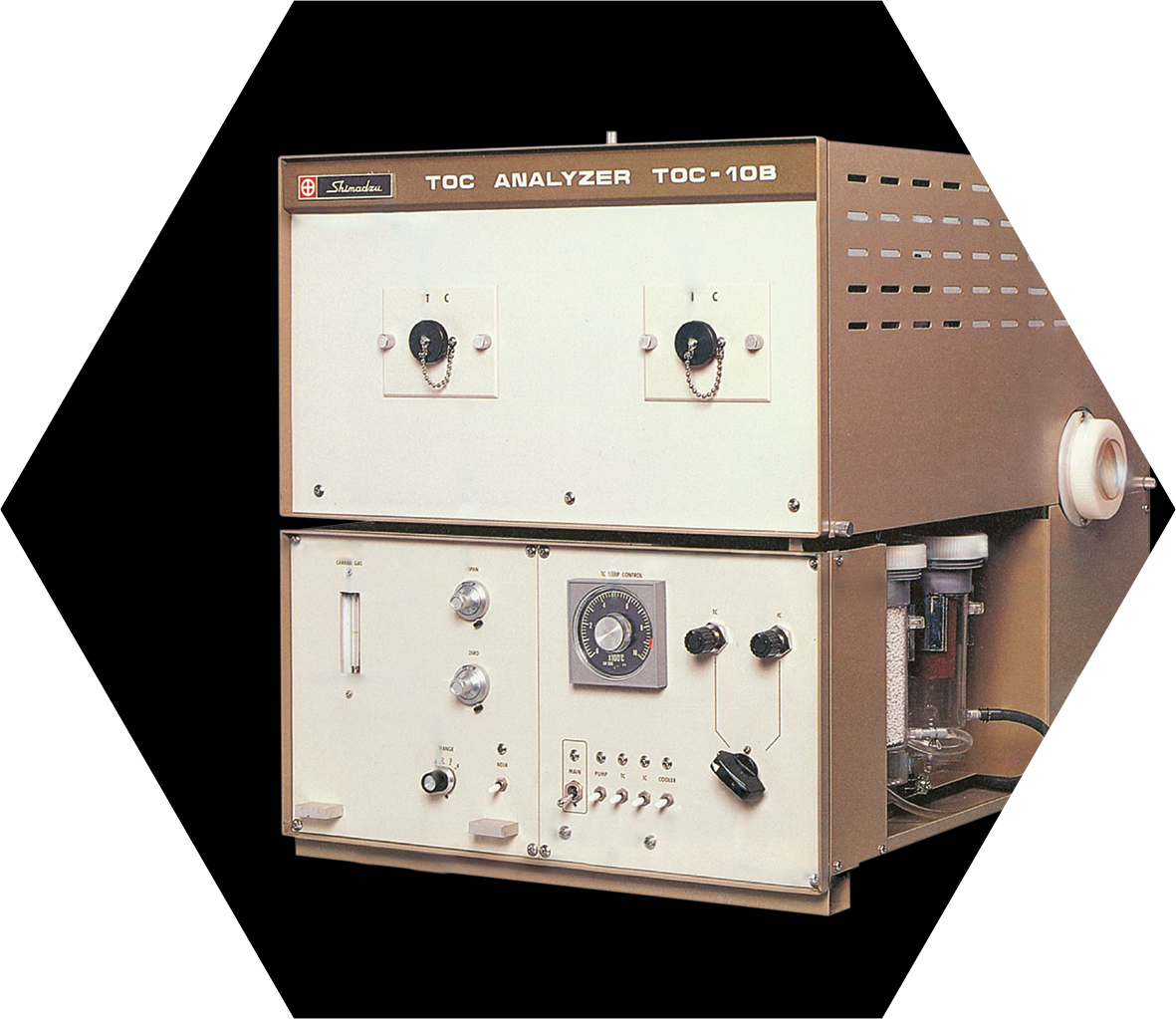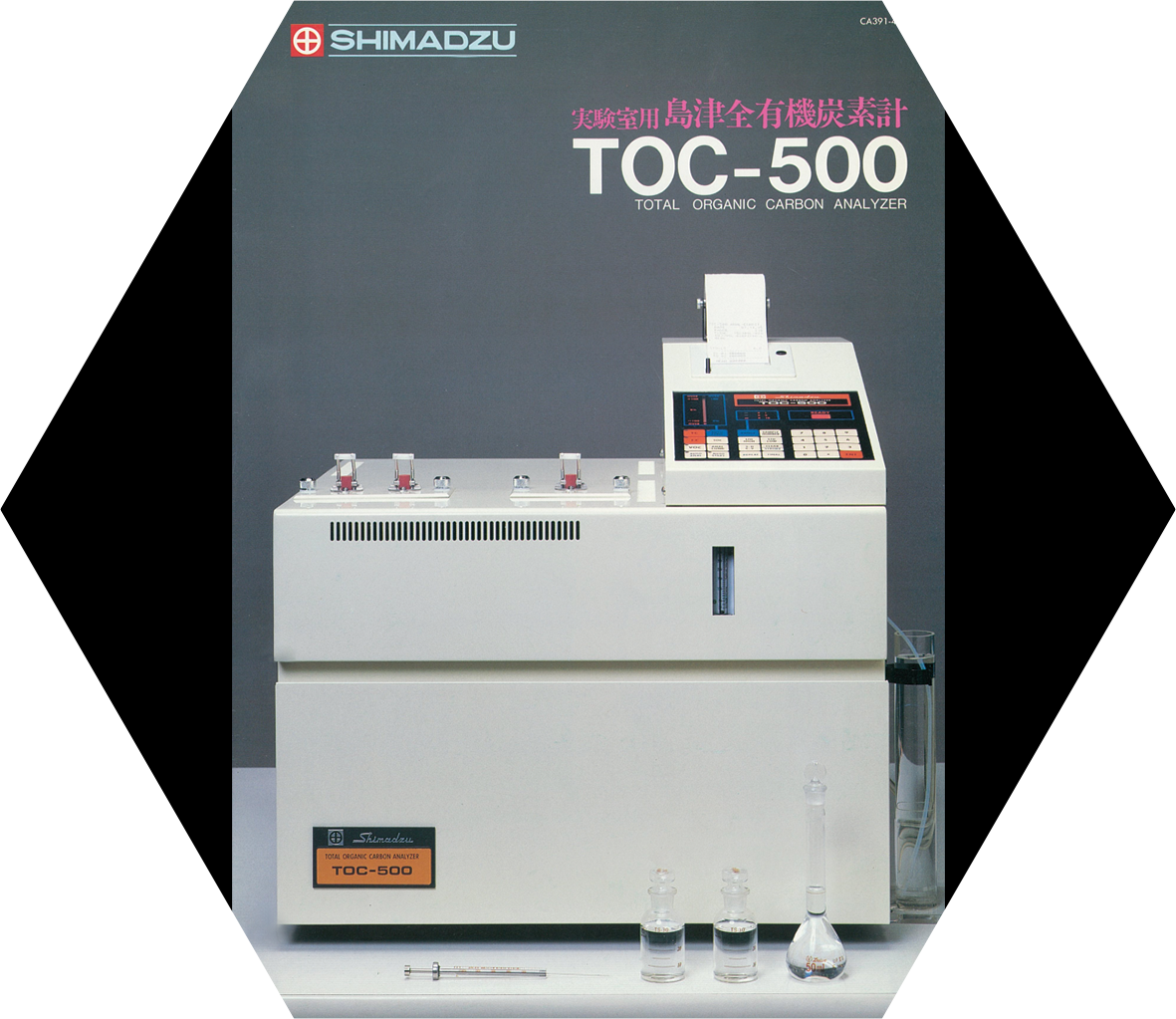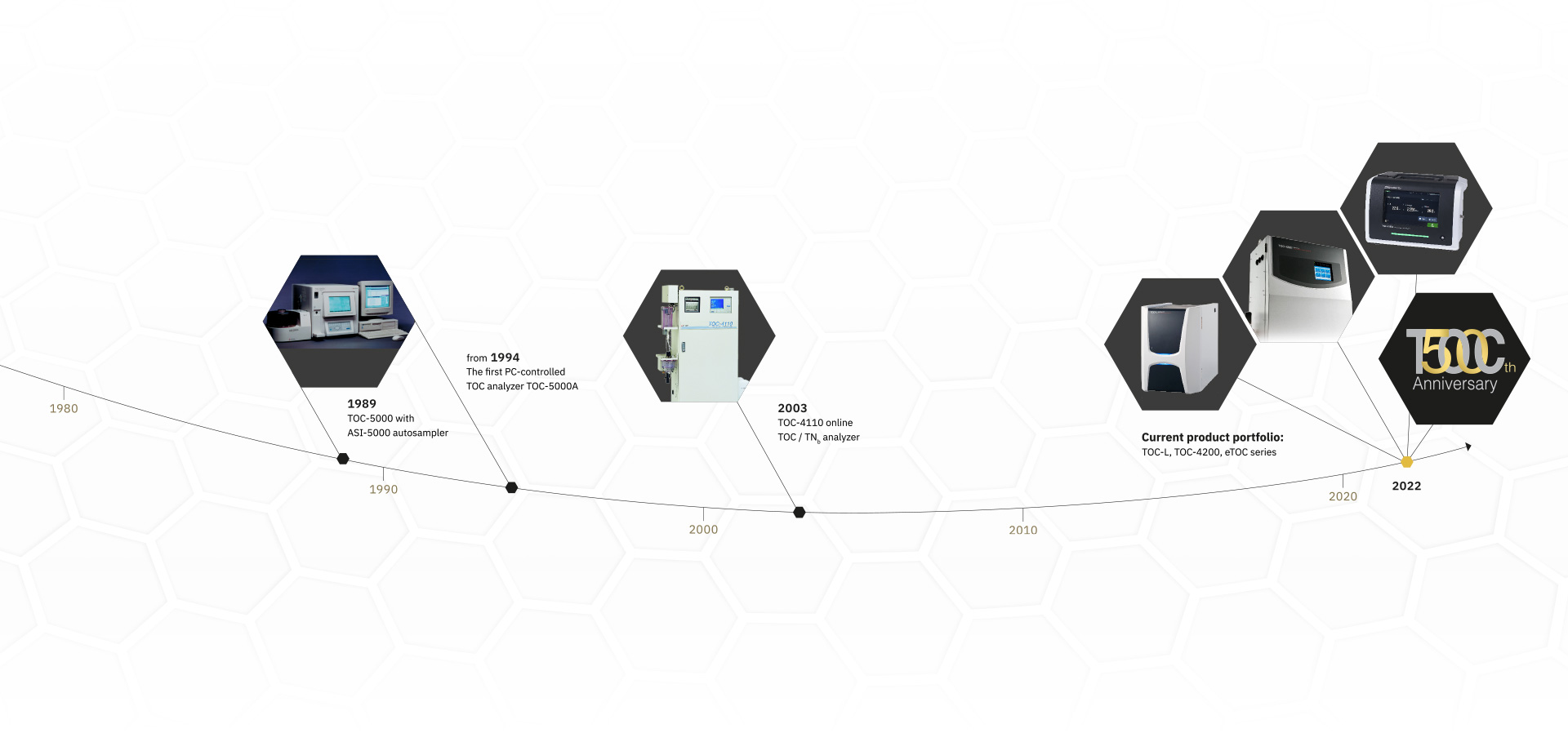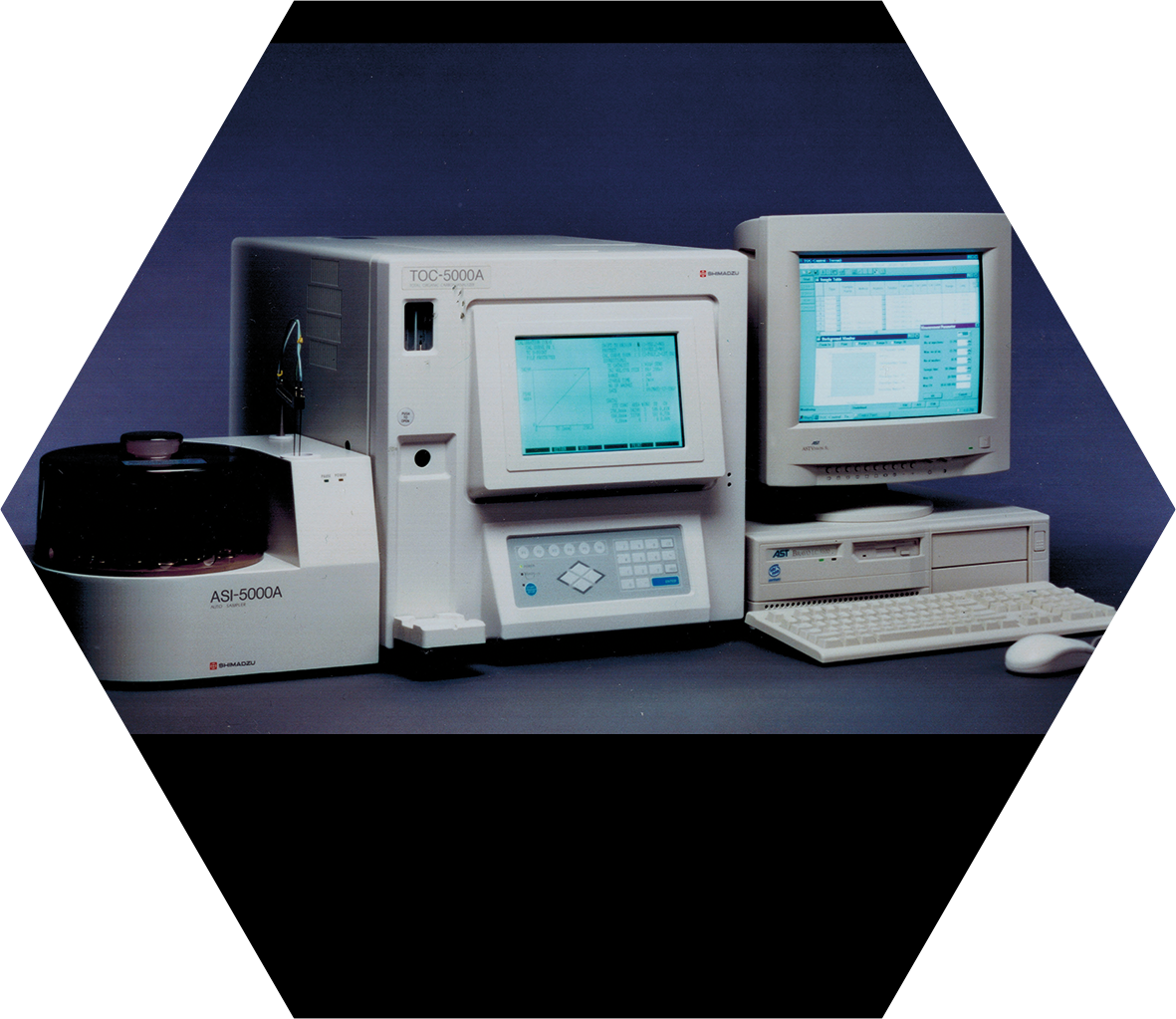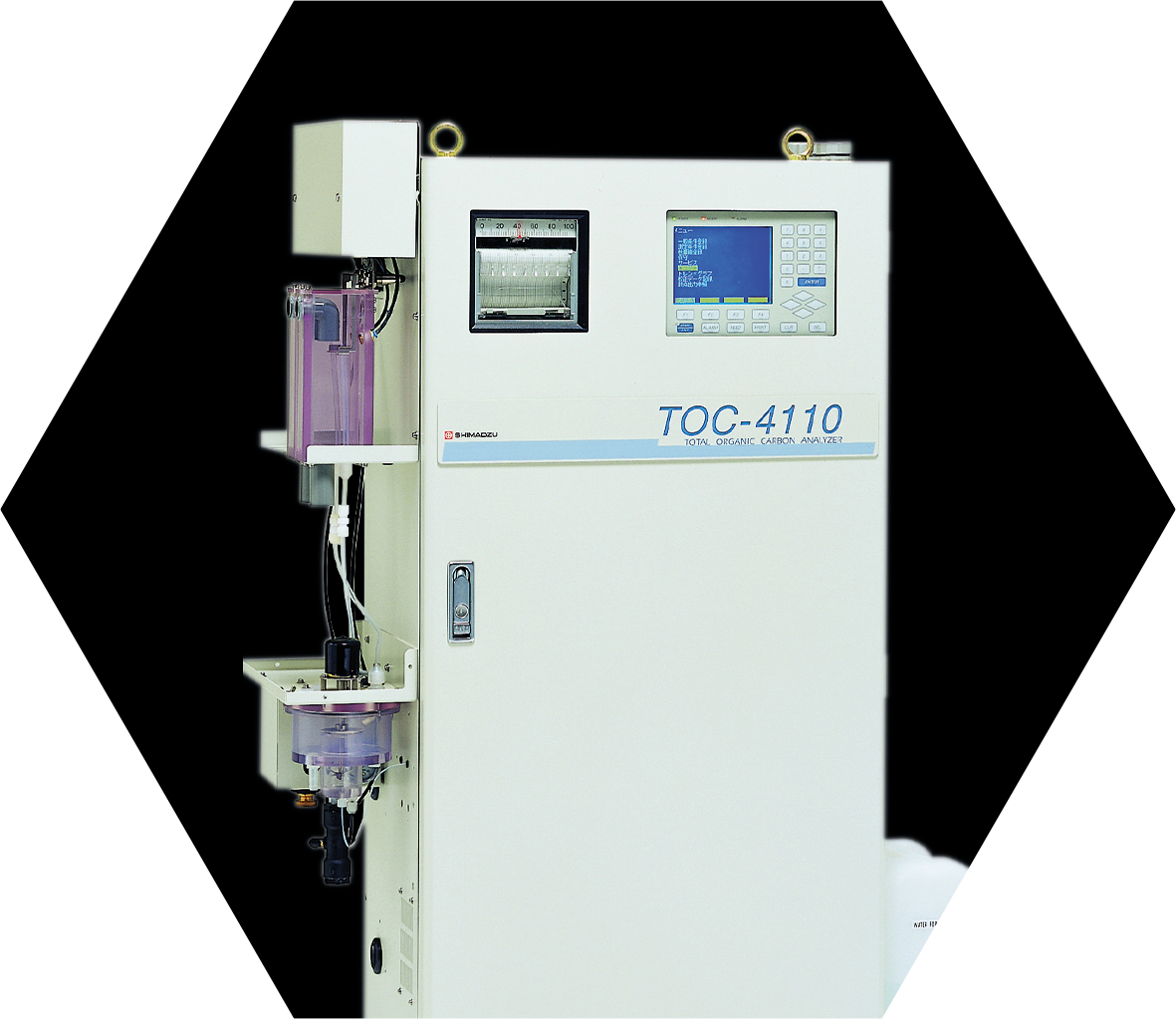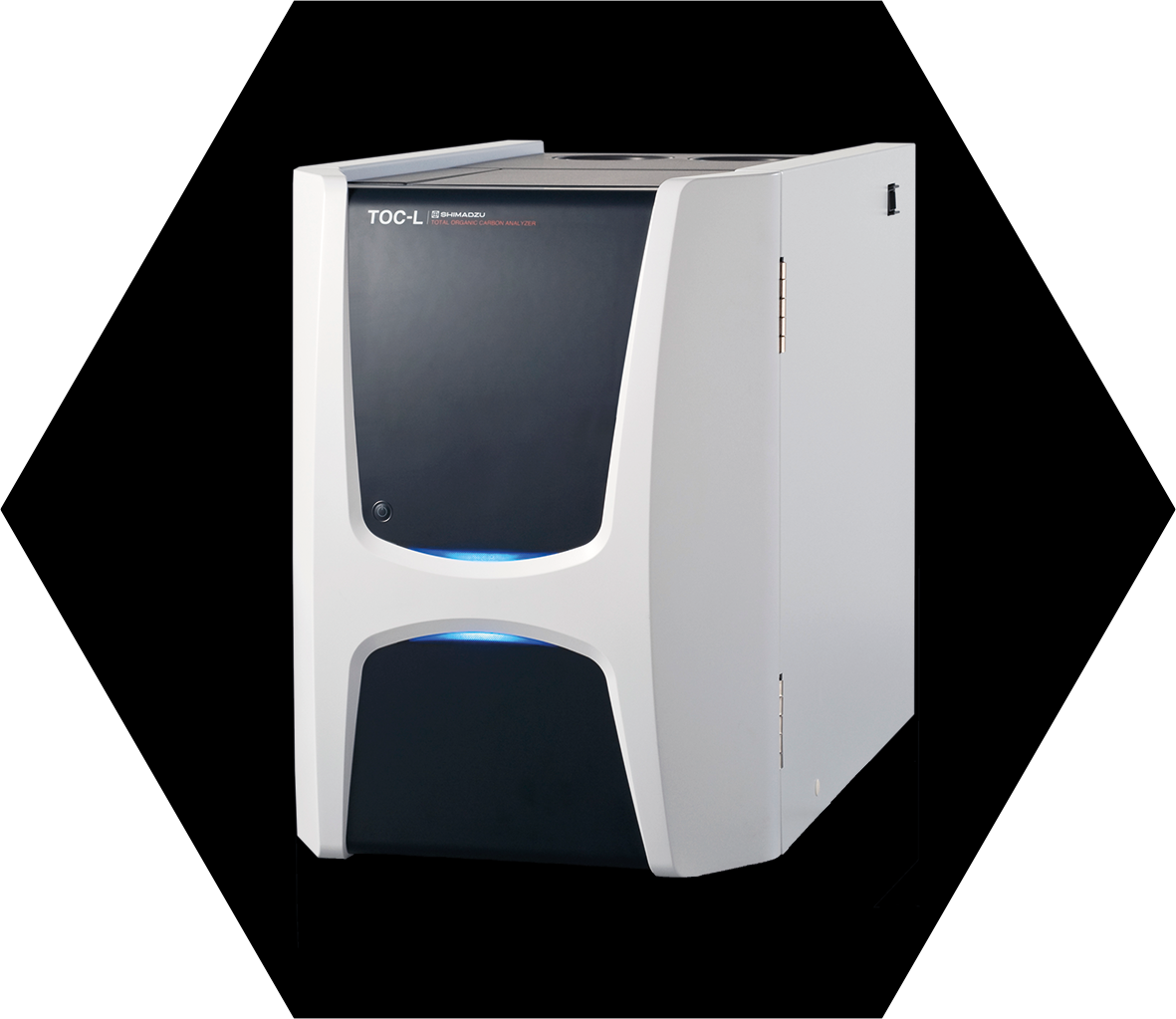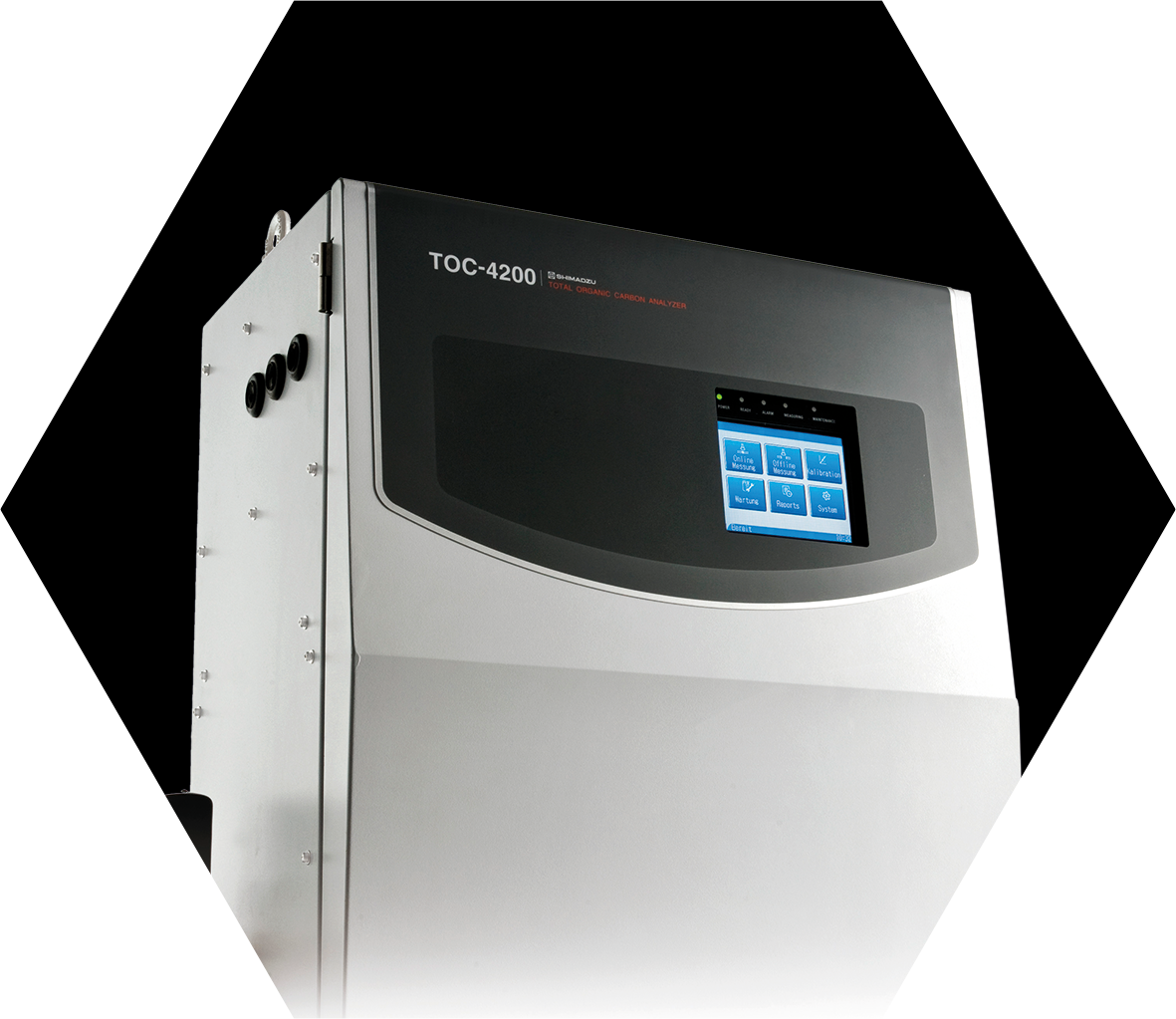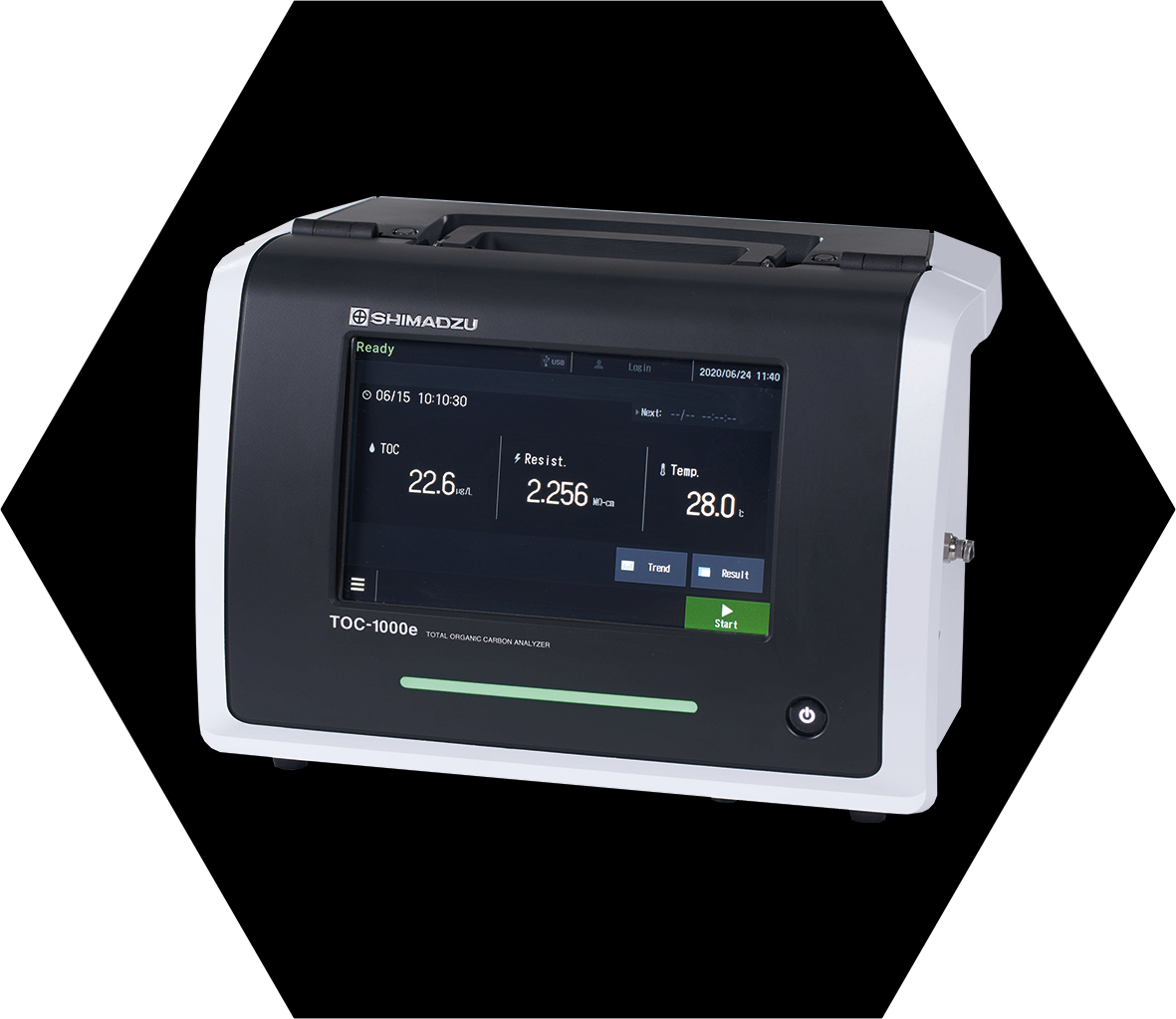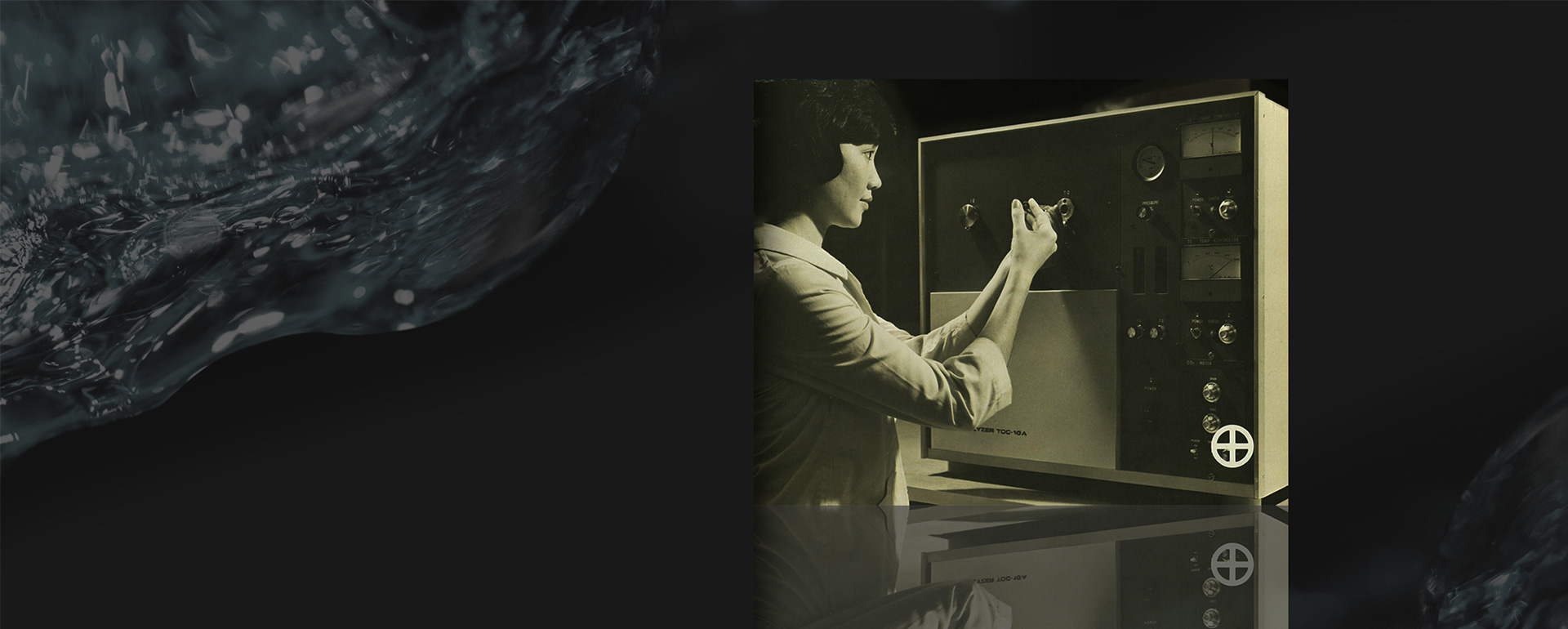
The story of a market leader
Shimadzu celebrates 50 years of innovation in Total Organic Carbon instruments


Water is an essential resource in both our ecosystem and economy. Total Organic Carbon (TOC) is one of the most important parameters in the assessment of water quality and thus essential for the protection of the valuable liquid. 2022 marks the 50th anniversary since Shimadzu first released a TOC analyzer. Today, Shimadzu’s market leading TOC analyzers are used in a wide variety of fields, ranging from laboratory water quality control to ultrapure water management in pharmaceutical production and online TOC monitoring in industrial wastewater treatment.
From the Age of Discovery to modern day analysis
Shimadzu has been instrumental in shaping TOC analysis over the past decades. However, the basic principles were established much earlier by inventors and scientists. During the Age of Discovery, around 1630, Flemish scientist Jan Baptist van Helmont recognized that when both wood and coal were burned, a vapor was produced whose properties differed from those of ordinary air. Undecided how to name it, he called it a wild spirit, the “gaz sylvestre”. He thus coined our modern term “gas”, and the substance is today known as the famous greenhouse gas carbon dioxide (CO2). It was Joseph Black who demonstrated in 1756 that CO2 occurred in natural air. He found that it could be created from other compounds, would extinguish a flame and was exhaled by humans. While doing research on magnesium carbonates, Black invented the analytical balance and promptly used it to measure carbon dioxide by loss on ignition (LOI). The LOI method, in which samples are heated and the resulting reduction in mass is measured, is the first quantitative test for organic matter.
Initiating the successful TOC product line
The invention of the necessary measurement technology began in 1924 when T. D. Yensen of the Westinghouse Electric and Manufacturing Company patented a measuring device that placed steel samples in a horizontal 1,000 °C furnace, combusted carbon in an oxygen carrier gas and collected carbon dioxide cryogenically. The quantification of CO2 was still rather complicated, but that changed when Erwin Lehrer and Karl Friedrich Luft introduced the “URAS” spectrometer in 1938. It facilitated the automatic determination of gas concentrations, such as CO2, using infrared (IR) radiation. In 1952, the license to produce URAS passed to German instrumentation manufacturer Hartmann & Braun, with whom Shimadzu established a technical partnership starting 1965. In 1967, the National Industrial Research Institute of Nagoya asked Shimadzu to develop a TOC analyzer and thus work began on the first Shimadzu instrument “TOC-1”, an internal prototype. The same year, James Teal at Dow Chemical Company patented a “Method and Apparatus for Determination of Total Carbon Content in Aqueous Systems”. This system was a combustion analyzer similar to Yensen’s device and manually injected aqueous samples directly, using a syringe, into a stream of oxygen flowing through a 700–900 °C furnace measuring the CO2 generated by infrared absorbance. Teal’s device appears to be the first combustion TOC analyzer for water.
Advancing environmental protection through research
In the wake of Japan’s rapid economic growth, air and water pollution became a social problem. For this reason, the Japan Environmental Protection Agency was established in 1971. TOC became an important environmental parameter within “JIS K 0102 – Test Methods for Industrial Wastewater”. The Shimadzu Corporation reacted by establishing an Environmental Instrument Department to strengthen the commercialization of environmental measurement instruments. In the following year 1972 – 50 years ago –, Shimadzu introduced its first TOC analyzer products in Japan: the TOC-100 automatic water quality monitoring system and the TOC-10 Total Organic Carbon analyzer for laboratory use. TOC-100 was used for continuous monitoring of water quality and pollutants in public waters based on Japan’s Water Pollution Control Law. TOC-100 was rapidly improved so that the successor model TOC-100A was released the same year.
The systems were optimized and ideas for improvements were generated at a fast pace, shaping Shimadzu’s unique TOC analyzers. As a result, the continuous TOC analyzers TOC-401 and TOC-402 could be released as successors of TOC-100 as well as the laboratory successor model TOC-10A. TOC-10A allowed manual injection of water samples into a 950 °C hot furnace under oxygen atmosphere using a micro syringe. CO2 originating from the combustion of organic carbon, was quantified, using a URA-3B infrared gas analyzer by Hartmann & Braun.
Back then, the measured CO2 signals, so-called peaks, were not integrated but printed on chart paper and compared with a prior calibration by peak height using a ruler. It was thus important to obtain consistently sharp peaks for all substances to be able to measure their height with as little inaccuracy as possible. That is why very high temperatures of around 1,000 °C had to be used. This would turn out to be a problem to solve for Shimadzu.
TOC analyzers need a supply of high purity, CO2-free bottled gas to function properly. Back in 1975, this came with a higher effort. For the convenience of the user, the newly released TOC-10B was supplied with ambient air using an internal pump. The system had an inbuilt purification system that would catalytically combust hydrocarbons and carbon monoxide in the air to carbon dioxide. A subsequent absorber would remove the CO2, and filters would further clean the air so that with increased purity high sensitivity TOC analysis could be achieved without bottled gas.
International expansion
The initial TOC analyzer models were quite successful in Japan, having made Shimadzu become a major player for TOC instruments in their domestic market by the end of the 1970s. However, since the market in Japan was still relatively small and the company wanted to expand its business, it was decided to introduce the devices overseas as well. The first overseas debut of Shimadzu TOC analyzers took place at an international exhibition in Tianjin, China in 1980, where the TOC-10B was exhibited as one of Shimadzu’s various analytical instruments.
Establishing the 680 °C combustion method still in use today
A breakthrough for Shimadzu TOC instruments was the TOC-500 completed in 1983. The analyzer layout had been significantly improved with this product. It was the birth of the 680 °C combustion method, still used with great success today. In TOC analysis, where 100% recovery of all organic matter is desirable, a higher combustion temperature was considered safer and produced sharper peaks for the measurement of peak height. However, the 950 °C combustion was at a disadvantage when samples contained salt. The salt melted at these high temperatures and would wear out the combustion tube and catalyst, significantly shortening its maintenance life. Since salt is contained not only in seawater but also in many wastewater samples, its effect on analysis robustness was significant. Shimadzu solved this problem by lowering the furnace temperature, while at the same time using a high-performance platinum catalyst. The new high temperature catalytic oxidation (HTCO) method was designed and evaluated to meet the required performance even at the lower temperature of 680 °C. In 1985, the method was submitted to Japanese standard committee JIS and approved. In addition, the catalyst replacement method, which had been the biggest drawback of TOC analyzers up to that time, had been significantly simplified, which attracted attention worldwide.
The first global launch in 1987: the easy-to-use TOC-500
Data processing had been revised so that peaks could be integrated automatically. The system would compare the peak area instead of height to calibration, in turn becoming much more selective for carbon, regardless of how easy or hard a compound was to oxidize. TOC-500 could be programmed for various methods via keyboard, and after analysis a report could be printed on thermal paper, including result and statistical parameters necessary for quality control. The effort for the operator to evaluate data could be significantly reduced that way. TOC-500 was the first Shimadzu TOC instrument to be launched globally, and in 1987 it was well received with major chemical and pharmaceutical manufacturers in Europe and petrochemical production in the southern United States. It made a name for itself through its ease of use in both analysis and maintenance on the Pittcon exhibition in 1987.
Becoming market leader with the TOC-5000
The TOC-500 was well received, but it was the 1989 successor model, the TOC-5000, that established Shimadzu as market leader in TOC analyzers. It was equipped with a unique automatic sample injection mechanism, employing a syringe pump with 4-port valve and sample slide injector. The analyzer had a large display and control keyboard simplifying operation. The TOC-5000 was fully compatible with autosamplers, eliminating the need for manual injection by the analyst, saving labor and improving measurement accuracy. Until then, the manual injection using a micro syringe had mostly been used, which was both complicated to operate and unsatisfactory in terms of measurement accuracy, and the idea was born as a result of day and night efforts to find a better solution. A newly developed high-sensitivity catalyst enabled extension of the measurement range to lower ppb range, making analysis of pure water finally feasible.
Together the improvements and additions resulted in a broader TOC application range suitable for the pharmaceutical, environmental and chemical market ranges. The TOC-5000(A), the upgrade of the TOC-5000, had been released in 1994. While many details had been improved, the biggest advance was certainly the release of the first Shimadzu PC software for TOC analyzers, “TOC Control”, developed originally in Europe.
At the latest, 1997 finalized the official entry of TOC analysis into the pharmaceutical industry when TOC was included as a parameter for pure water and water for injections in the United States Pharmacopeia (USP), Revision 23. Many other pharmacopoeias followed. Cleaning validation became a common application as well as the use of Clean-in-Place (CIP) increased. The combination of high-sensitivity catalyst, capacity for large injection volume and the inbuilt automatic blank check capability made the TOC-5000(A) ideally equipped for pharma applications. The series was so popular and is so robust that it is still used by customers today.
The TOC-4000 – the first modern online TOC
Process Analyzer Technology (PAT) continued to develop as well. With the TOC-4000, a first modern online TOC instrument came onto the market, which combined the advantages and robustness of the 680 °C combustion method with the sled injection technique. In order to perform automatic dilution, the 4-port valves were soon replaced by 8-port valves.
In addition, larger syringes were used, which offered the possibility of purging the inorganic carbon in the syringe barrel, a technique that has proven itself to this day and is still in use. In 1998, with the development of the TN module, the determination of TNb was made possible in the TOC-4100 series.
Enabling the analysis of saline samples with long service life
In 2000, the proven technology of the online systems was integrated into the TOC-V laboratory instrument series. The automatic dilution function now became available for laboratory users. A new infrared detector was introduced for these systems with an electronic autozero function. In 2002, the TOC-V series was completed with an instrument that uses wet chemical UV oxidation to determine TOC. Among numerous other improvements, options and modules, the High Salt Kit was developed for the TOC-4110 series online systems. This unique catalyst enables the analysis of saline samples with long service life.
This kit for saline samples can now also be used in the current TOC-L series. With different catalysts and options, the TOC-L instruments have a wide range of applications, from ultrapure water to wastewater or even to the measurement of soil suspensions. The same is true for the current online system TOC-4200. For highly sensitive TOC analysis required in online monitoring of ultrapure water, for example in the pharmaceutical sector or for electronics manufacturers, Shimadzu has introduced the TOC-1000e in 2021. It is the first TOC analyzer to use environmentally friendly excimer technology for oxidation.
